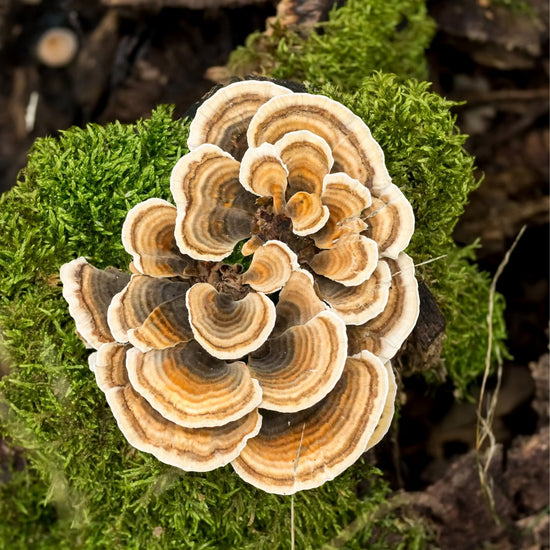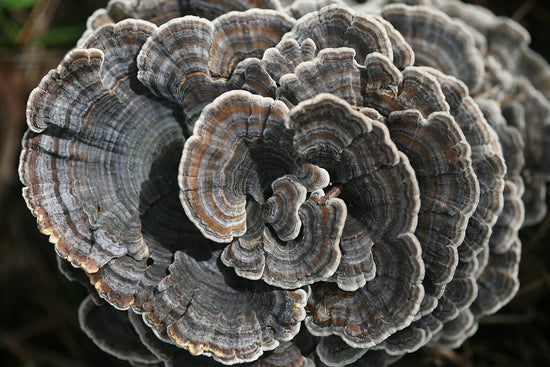The Biggest Organism on Earth is a Fungus
The Humongous Fungus - Dr. Myron Smith
February 23, 2021
Podcast Topics
- Armillaria colonies and the conditions needed to grow to tremendous sizes
- Ecosystem impact from these fungi, specifically in old growth forests
- Rhizomorphic structure, function, and evolution in this genus
- The impressive age of The Humongous Fungus, estimated to be up to 4,000 years
- DNA and genome sequencing to identify field colonies of Armillaria solidipes
- Technologies for viewing subterranean fungi
- Melanized plate formation upon individual Armillaria solidipes
- Electroconductivity of fungi and Armillaria solidipes
The Honey Mushroom
The biggest organism on Earth, by area, is a fungus. Specifically, it's Armillaria solidipes, AKA The Honey Fungus. It’s edible, glows in the dark, is UV resistant, and is technically parasitic. Thriving in the Blue Mountains of Oregon, this tremendous individual covers approximately 3.7 sq. miles, and could be over 8,000 years old.
"Autumn mushrooms 2: Honey Fungus (Armillaria mellea)" by Peter O'Connor aka anemoneprojectors is licensed under CC BY 2.0
In today’s episode, we speak with an expert on this fungal genus to help us understand how this individual could be so successful. Prepare for some extraordinary biological factoids. After this, you might have a new favorite mushroom.
Meet Dr. Myron Smith
 Dr. Myron Smith is a Professor of Biology at Carleton University in Ottawa, Canada. Dr. Smith obtained a Bachelor’s Degree in Botany at the University of Alberta. Afterward, he acquired his Master’s and Ph.D in Genetics within the Biotechnology Program at the University of Toronto.
Dr. Myron Smith is a Professor of Biology at Carleton University in Ottawa, Canada. Dr. Smith obtained a Bachelor’s Degree in Botany at the University of Alberta. Afterward, he acquired his Master’s and Ph.D in Genetics within the Biotechnology Program at the University of Toronto.
When Dr. Smith started his graduate work, he began to research with Jim Anderson, a Fungal Geneticist, at the University of Toronto. All in all, Dr. Myron Smith began his studies in botany, moved into mycology, then completed his formal studies in genetics.
Now, Dr. Smith researches “genetics, molecular biology, microbiology, and general biology” (1). In detail, his work questions basic biological interests and has biotechnology applications in diverse areas that include health, agrifood, environment, and biofuels.
Designed for your mind, body, and soul
-
Energy Cordyceps Tincture76 reviews Energy Cordyceps Tincture

-
Mushroom Capsules Starter Kit11 reviews Capsules Starter Kit

-
Daily 10 Mix Mushroom Tincture82 reviews Daily 10 Mix Tincture

-
Calm Reishi Tincture55 reviews Calm Reishi Tincture

-
Daily 10 Mushroom Blend Powder44 reviews Daily 10 Blend Powder

-
Mushroom Gummies Starter Kit10 reviews Gummies Starter Kit

-
Focus Lion's Mane Capsules33 reviews Focus Lion's Mane Capsules

-
Mushroom Powder Starter Kit12 reviews Powder Starter Kit

-
Daily 10 Mix Mushroom Capsules23 reviews Daily 10 Mix Capsules

-
Focus Lion's Mane Powder26 reviews Focus Lion's Mane Powder

-
Energy Cordyceps Tincture76 reviews Energy Cordyceps Tincture

-
Mushroom Capsules Starter Kit11 reviews Capsules Starter Kit

-
Daily 10 Mix Mushroom Tincture82 reviews Daily 10 Mix Tincture

-
Calm Reishi Tincture55 reviews Calm Reishi Tincture

-
Daily 10 Mushroom Blend Powder44 reviews Daily 10 Blend Powder

-
Mushroom Gummies Starter Kit10 reviews Gummies Starter Kit

-
Focus Lion's Mane Capsules33 reviews Focus Lion's Mane Capsules

-
Mushroom Powder Starter Kit12 reviews Powder Starter Kit

-
Daily 10 Mix Mushroom Capsules23 reviews Daily 10 Mix Capsules

-
Focus Lion's Mane Powder26 reviews Focus Lion's Mane Powder

-
Energy Cordyceps Tincture76 reviews Energy Cordyceps Tincture

-
Mushroom Capsules Starter Kit11 reviews Capsules Starter Kit

-
Daily 10 Mix Mushroom Tincture82 reviews Daily 10 Mix Tincture

-
Calm Reishi Tincture55 reviews Calm Reishi Tincture

-
Daily 10 Mix Mushroom Tincture82 reviews Daily 10 Mix Tincture

-
Daily 10 Mix Mushroom Capsules23 reviews Daily 10 Mix Capsules

-
Daily 10 Mix Mushroom Gummies22 reviews Daily 10 Mix Gummies
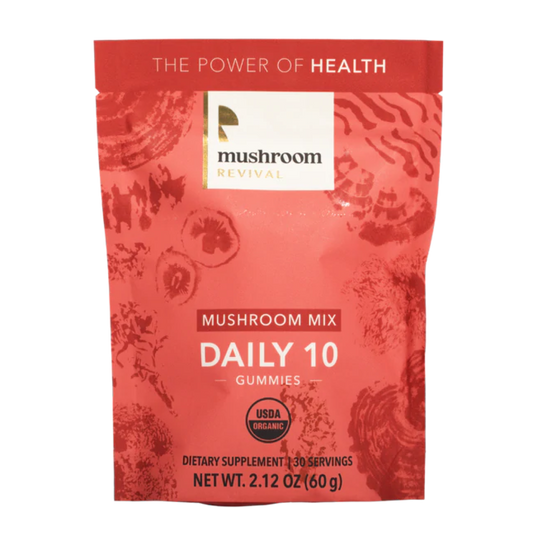
-
Daily 10 Mushroom Blend Powder44 reviews Daily 10 Blend Powder

-
Focus Lion's Mane Capsules33 reviews Focus Lion's Mane Capsules

-
Focus Lion's Mane Powder26 reviews Focus Lion's Mane Powder

-
Focus Lion's Mane Gummies15 reviews Focus Lion's Mane Gummies
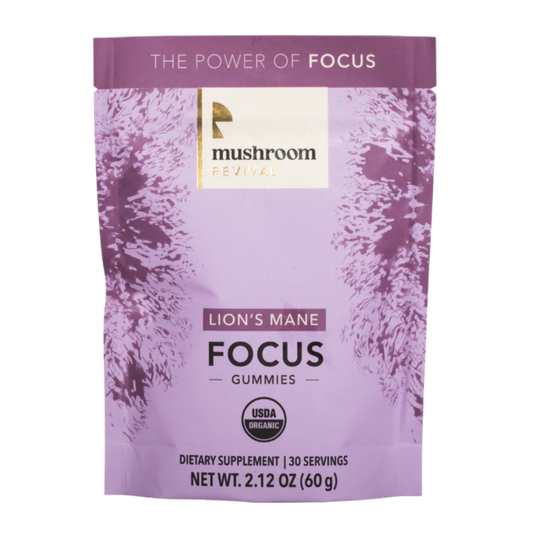
-
Focus Lion's Mane Tincture55 reviews Focus Lion's Mane Tincture

-
Energy Cordyceps Powder12 reviews Energy Cordyceps Powder

-
Energy Cordyceps Capsules10 reviews Energy Cordyceps Capsules

-
Energy Gummies8 reviews Energy Gummies

-
Energy Cordyceps Tincture76 reviews Energy Cordyceps Tincture

-
Calm Reishi Tincture55 reviews Calm Reishi Tincture

-
Calm Reishi Mushroom Capsules15 reviews Calm Reishi Capsules

-
Calm Gummies6 reviews Calm Gummies
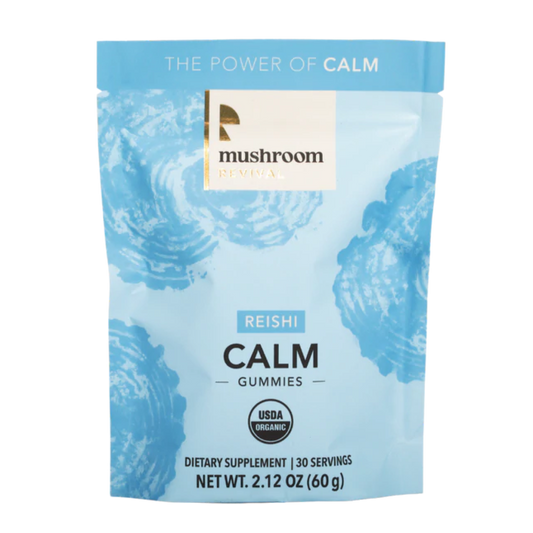
-
Daily 10 Mushroom Blend Powder44 reviews Daily 10 Blend Powder

-
Mushroom Gummies Starter Kit10 reviews Gummies Starter Kit

-
Focus Lion's Mane Capsules33 reviews Focus Lion's Mane Capsules

-
Mushroom Powder Starter Kit12 reviews Powder Starter Kit

-
Daily 10 Mix Mushroom Tincture82 reviews Daily 10 Mix Tincture

-
Daily 10 Mix Mushroom Capsules23 reviews Daily 10 Mix Capsules

-
Daily 10 Mix Mushroom Gummies22 reviews Daily 10 Mix Gummies

-
Daily 10 Mushroom Blend Powder44 reviews Daily 10 Blend Powder

-
Focus Lion's Mane Capsules33 reviews Focus Lion's Mane Capsules

-
Focus Lion's Mane Powder26 reviews Focus Lion's Mane Powder

-
Focus Lion's Mane Gummies15 reviews Focus Lion's Mane Gummies

-
Focus Lion's Mane Tincture55 reviews Focus Lion's Mane Tincture

-
Energy Cordyceps Powder12 reviews Energy Cordyceps Powder

-
Energy Cordyceps Capsules10 reviews Energy Cordyceps Capsules

-
Energy Gummies8 reviews Energy Gummies

-
Energy Cordyceps Tincture76 reviews Energy Cordyceps Tincture

-
Calm Reishi Tincture55 reviews Calm Reishi Tincture

-
Calm Reishi Mushroom Capsules15 reviews Calm Reishi Capsules

-
Calm Gummies6 reviews Calm Gummies

Dr. Smith’s 101 on The Honey Fungus
Today, Dr. Smith shares his knowledge on The Honey Fungus. To learn a lot more details about The Biggest Mushroom in the World, listen to the podcast after reading this blog post! Well, to begin, the species is found in all different parts of the world including North America, Asia, South Africa, and even Australia.
The reason why The Honey Mushroom is different from its other fungi brothers and sisters is because of its rhizomorph structures or the “roots” of the fungi. They are made of bundles of hyphae. The hyphae are branches of mycelium also known as the vegetative parts of the mushroom. That’s why another street name for Armillaria solidipes is the “Shoestring Fungus” or “Bootlace Fungus.”

"Rhizomorphs (thick fungal threads) of Armillaria species" by Lairich Rig is licensed under CC BY-SA 2.0
In the news, The Honey Mushroom is known as the biggest mushroom in the world or the biggest organism on the planet. Many people may imagine that the species is a humongous fruiting body or actual mushroom. However, it’s actually the rhizomorph structures that form underground networks in the soil that make it so large. We can’t actually see the whole organism with our eyes. Yet, the biggest colony of Honey Fungus is over 2,200 acres in Oregon.
Why is The Honey Fungus So Big?
The reason why The Honey Fungus species lives to be so big is because of the living environment in which they thrive. Their homes are “old and stable, and relatively undisturbed,” as Dr. Smith states. Only when they are situated in perfect growing conditions will they get to be so large.
 "Size 9 Honey fungus" by pete. #hwcp is licensed under CC BY-SA 2.0
"Size 9 Honey fungus" by pete. #hwcp is licensed under CC BY-SA 2.0
When you’re walking in a forest with Armillaria solidipes, you will find one mushroom here and a second one there. At first, you may think that they are different mushrooms. However, that’s where genetic testing comes into the field. One way to analyze the origins of the fruiting bodies that we find above ground is through its genes.
So, when scientists like Dr. Smith brings those two mushrooms into the lab, the analysis results show that the mycelium of both fungi are from the same source. In other words — they are a part of the same mushroom!
“[The Honey Fungus] is not only large and old, and massive, but it's also extremely stable from a genetics perspective.”
— Dr. Myron Smith
So, in total, The Honey Fungus is a collection of colonies that exist underground in bundles of networks. The actual mushrooms will appear scattered throughout the forest floor, yet they are from the same origin. As this large organism continues to grow and establish territory throughout the forests, we are able to learn about The Biggest Mushroom in the World.
Three Interesting Characteristic Facts About The Biggest Mushroom in the World
#1 - The Honey Mushroom Produces ElectricityFirst, there has been talk about the electrical conductivity of mushroom species and the possibilities of that power being able to replace batteries. In the podcast, Dr. Smith shares some research in regards to biotechnology and the Armillaria solidipes species.
Apparently, there is an “action potential” in Armillaria rhizomorphs. It’s a natural and normal charge and discharge process that produces a signal when attached to an extracellular electrode. Neat, right?!
#2 - The Biggest Mushroom in the World is Bioluminescent
Second, just like fireflies, glow worms, and the bioluminescent microbes in the ocean, The Honey Fungus glows in the dark. The cool thing about this is that you can grow the Armillaria solidipes species yourself. Moreover, Dr. Smith shares how he stakes plates of the species growing and is able to see and take notes with them glowing in a dark room.
#3- The Honey Fungus has a Strong Immune System
Third, Dr. Smith has a keen interest in non-self recognition. Simply put, it’s “a kind of immune system that fungi have.” The Honey Mushroom has a highly developed and evolved immunity. One of the reasons why this fungus species has gotten so big and old is because they have a strong sense of self. Other species would die off, but Armillaria seem to have immortal attributes.
Moreover, this immunity comes from a combination of the mushroom being able to recognize invaders that are not of itself as well as specific chemical defenses. To learn more about the fungal immune systems, scientists actually look toward the taxonomy of humans and animals for comparison rather than plants. Mushrooms are very unique and mysterious, being more animalistic, in this regard.
The Unknown Information of the Fungus World
Aside from the unique characteristics that we already know about Armillaria species, there is still so much more to learn from The Honey Mushroom. In total, there is a vast network of insights waiting to be revealed within The Biggest Mushroom in the World. Since there is a lot of knowledge to discover, the world is in need of more myco-researchers and educators.
“[W]e need a lot of people working [to study fungi] because [it] could have a pretty profound impact on our future.”
— Dr. Myron Smith
With more myco-researchers and educators studying the world of mushrooms, we will be able to figure out ways to “defend ourselves against food spoilage and plant diseases” and other areas that can change the course of our future for the good! Not only that, but we will learn even more cool facts to share with our friends.
In the end, today’s podcast interview included details on the biggest mushroom in the world like how large the mass is in comparison to other huge things, how The Honey Fungus takes territory in the forest, and much more which is not included in this blog post.
If you want to learn more about The Honey Mushroom, we encourage you to listen to the show and check out the Podcast Resources below.
Podcast Resources & Citations
Myron’s Website: https://myronlsmith.wordpress.com/about/
Taxonomy: https://openjournals.wsu.edu/index.php/pnwfungi/article/view/1075
Articles mentioned: https://drive.google.com/drive/folders/1uPfchquHlRvSJrmhaKMJWnYOgATj20c0?usp=sharing
TRANSCRIPT
Welcome back mushroom family to another episode of the mushroom revival podcast. This is a podcast bridging the gap between you our amazing, beautiful, incredible listeners and the wonderful wacky world of mushrooms and fungi. Were unbelievably obsessed with mushrooms, and all that they can do and all that they are we bring on guests and experts from all around the globe to geek out with us and go into the wormhole of all that is fungi. And we're mushrooming the culture around fungi and mushrooms and we're so excited to have you join us into the mushroom family. So let's tune in and Truman and get into it.
Lera 1:12
And today we have the long awaited topic of the armillaria genius also known as the biggest organism on earth. And we are joined with Myron Smith, a professor in biology who specializes in this genus and we are going to get deep into the mycology of this fungus and why we love it so much. Myron, thank you for joining us today.
Myron 1:37
Oh, you're welcome. Nice to be here. Always happy to talk about fungi.
Alex 1:41
Do you have mushroom magnets on your fridge behind you?
Myron 1:44
Oh, I have all kinds of things behind me. I have mush. They're not magnets, they're actually a real mushrooms. And so I do a mycology class. And so I try this term to add something every day. New and I don't know if the students have noticed. But you know, I add I try to add some some psychological thing every day. And sometimes I use them as props like here I have some grass combs with or got rice.
And, you know, this is ginger. It's actually the roots have a good antifungal. So I talked about.
Lera 2:23
And where are you tuning in from today?
Myron 2:25
I'm in Ottawa, Ontario, Canada.
Lera 2:27
Well, why don't we start off with a bit of your story and how you got into fungi, we always ask people how they got inoculated and have decided to devote a chunk of their life to mushrooms.
Myron 2:41
Yeah, I have really early memories of collecting mushrooms with my family and surrounding families out in the bush in northern Alberta. And, you know, as a child hunting mushrooms with homemade bow and arrow and, and, you know, so these are some pretty deep sort of memories for me. And then when I started university, I was interested, first of all in botany, because I thought plants would be useful. And then I started getting into mycology because that was where it was taught. And then I was also interested in genetics. And that's where I started my graduate work with Jim Anderson at U of Toronto. He was one of the only fungal geneticists in Canada at the time, so I was pretty excited to meet him and start working with him.
Lera 3:30
Well, before we funnel into your specific research on armillaria, found in Michigan, I think it's definitely worth visiting this genus as a whole. So the armillaria is more commonly known as the honey fungus. And it's edible. People forage it, it's found all over North America, and I believe parts of Asia and potentially even South Africa,
Myron 3:53
and Australia
Lera 3:54
and Australia. Great. Could you give us kind of a 101 on this genus, and what sets it apart from other fungi? Yeah, it's
Myron 4:04
so it's a natural part of the ecosystem, it's probably got a positive role in thinning forests and usually attacking diseased or suppress trees. But it can be problematic in tree farms. And in natural forests. There's a few species of armillaria that are actually pretty aggressive pathogens, and it does cause damage to trees in that respect. And I think what sets it apart is mainly the rise of morph structures that are bundles of hyphy. I think it's probably the only genus that has rising morphs. There are some woodland fungi that have chords, and they're sort of aggregates of hyphy. If you dig around the soil in a forest, you'll find you know, these white strands that are actually bundles of Ivy. But armillaria has a very advanced type of cord. It's called the rise of morph and that's where it also gets its Name is the shoestring fungus or bootless for fungus.
Alex 5:04
Oh, cool, what one of the this particular fungus has gotten a lot of notoriety and a lot of spotlight in a lot of news articles that, you know, it's crowned as the biggest organism on the planet. And most people think of that, you know, if they're not mycologist, or not too invested into this space, they think of a huge mushroom fruiting body. But it's actually these underground networks, these rise and morphs that normally people don't think, because obviously, they can't see under the soil. And there's a few different colonies, one that I think is the biggest is in Oregon, that I believe is over 2200 acres, is that right? Can you can you just touch upon this specific colony, and maybe some fun facts that you can share with our listeners?
Myron 6:01
Yeah, these are probably organisms that would sort of get to be this size, provided that the forest that they're living in is old and stable, and relatively undisturbed. And then they will be able to grow to this size. And it's not really clear why some individuals get really large. By far, most individuals of these fungi are going to be really small, probably, you know, 99% of the individuals are smaller than you know, you could hold them in your hand. But every once in a while, for some reason that we don't really understand some of these individuals get really large could just be that they were in there early on when the forest was established. So for example, in northern Michigan, the big fungus we've been working on probably came in after the ice age when the when the trees started to colonize. And they, my feeling is that got a jump on other individuals. And that's how it got to be that size. So that as you say, the challenge is really identifying the individual boundaries, you know, where you know, you're walking through the woods, you see a mushroom here and a mushroom 10 meters away. And without doing the genetic analysis, you wouldn't really understand that those are parts of the same mycelium part of the same fungus. So you, you pretty much have to do the genetic testing, except in the case of the West Coast individuals, you can see those almost like a fairy ring from aerial photographs. But the one we've worked on mainly in northern Michigan, is not really obvious from aerial photographs, and you have to get in and do the genetic analysis to and a lot of collecting to kind of see where it begins and where it ends. This is
Alex 7:51
also called the meadow maker. And, you know, a lot of people are scared of anything parasitic. And it obviously it's depends on what level of the ecosystem that you're looking at it through and some people have said, Well, that's a good thing. It makes meadows and a lot of plant species and animal species and bacteria and things like that. really thrive and Meadow like environments. Probably not good for the trees, but maybe on a million year scale. It might be good for the trees and and can you say that you can see kind of like from a satellite image this fairy ring is it this this destruction of trees and and there's this limit where you can see living trees, where the fungus hasn't, hasn't reached yet?
Myron 8:40
Yeah, it's a noticeable circle of dead and dying trees that you know, you can make out you can when you look specifically for it, it might not be obvious when you're on the ground necessarily, but it's certainly obvious if you look at it from a distance. And you know, other fungi have similar characteristics like the fairy ring mushroom that you see on lawns and things like that would also grow and ring so, so the difference there is that, you know, our Malaria is kind of growing out and it's still occupying the center area, and it becomes maybe quiescent, and we'll attack a tree and maybe attack a sick tree. But they've been doing this in these areas for 1000s of years at least. And so and you know, the forests are still healthy in these areas overall. So it's not like there's something unnatural or there causing a collapse of forest ecosystems. I think that it's it's more accurate to say that they're part of the natural ecosystem. They're there to to convert woody waste material into nutritional elements for other organisms and they're also part of the rejuvenation process. So you know, pathogens have a place to It's just when things get out of whack and out of balance that we really noticed them as having a major impact on on human affairs. But from an ecosystem perspective, they're a natural part of it.
Lera 10:10
And I want to revisit this statistic of this individual being the biggest organism on Earth, correct me if I'm wrong, but that just applies to the acreage that it covers. But if you were to actually bring that individual all together and comp it up into a ball, it would come probably second or third to the blue whale? Or where will that be?
Alex 10:34
No, go to Aspen, calm colony of trees is biggest by mass.
Myron 10:40
But But there again, most of the tree is dead wood. So you'd have to, you'd have to really do the arithmetic on that and look at the living wood, or the living part of the tree, and then factor that into your calculation. It's not so we published that paper in 92, where we did the genetic analysis identified this single individual that had a large area. And then, you know, in talking to actually a fellow at university, who asked Well, how big is it? How does it compare to a dinosaur? And and how does it compare to the largest animal ever to wander on Earth, the female blue whale. And so, you know, we started looking into, you know, trying to calculate, it's really not easy, and it's pretty rough calculation, but trying to get an idea of what the density of living tissue is in a, you know, 10 centimeter cube of soil, and then sort of multiplying that by the area to get some idea of how massive this individual is so, so the mass is in excess of a single blue whale, it's probably more like, so the one in Oregon, I'm not sure, I don't know that the the mass estimates have been made, but the one in northern Michigan is in around probably two to four, blue whales and in mass. So these are really dispersed. In a sort of indeterminate growth forms, that when you start sort of, as you say, gathering them all together, they would have an incredibly large mass, that's for sure. And they're also really old, like our estimates of age are based on if there's uninterrupted growth from some center point out to the, to the margin. But that's very naive, because we know that there's lots of other individuals around in the world kind of duking it out for territory. And you can't necessarily push into another individual's territory, there's going to be a battle, there's chemical signaling and, and toxins being produced and antibiotics. And so it's not easy to, you know, overtake other individuals, once those individuals are established. So, you know, our estimates of age in around, you know, two to 4000 years are probably very, on the low side, I would say.
Lera 13:12
Yeah, that was astonishing to read that the estimates were between 3008 1000 years,
Alex 13:18
since you're not able to really see it, right. How your, your paper talking about relying on DNA analysis to figure out whether this is one huge colony versus a lot of smaller ones kind of dispersed about this specific region? Are you do you know, 100%? Or is it kind of best guess we 99% or, you know, a high a high number,
Myron 13:50
that's almost 100%, you're never 100% in science, you can never, in actual science, you can never, there's no such thing as proof. But so initially, what we did is we looked at polymorphic genetic markers, so ones where there's some variability, and then you're right, what we did is we said, well, if it's not an individual, what would be the next, you know, most genetically similar set of individuals, and that would be like progeny or parent offspring type relationships. But when you get sort of that type of relationship, you generally lose genetic variability from individual to individual. So it's, it's it's the basis for, you know, inbreeding depression, for example. So what we did is we looked at these variable genetic markers, and we could use a statistical test to show that in the original paper that over, you know, with a probability of point oh one that these were, all these samples were from the same genetic individual, but we really locked that down. years ago when we did the study where we sequence the entire genome from different areas of the Michigan individual. And there we saw identity almost across this individual. So really remarkable identity, way less genetic variation than I have, say, if we were to sample the cells in my toe compared to the cells in my finger, it'd be way more genetic mutations evident in that analysis than there are across this massive fungus. So that fungus is doing something we're not really sure what we can explain it, we've got some ideas that need to be tested. But the fungus is, is not only large and old, and massive, but it's also extremely stable from a genetics perspective.
Alex 15:48
And do you you brought up that it's kind of rare that they're able to grow this large? And obviously, the armillaria species in Michigan is a different species than the one in Oregon? That's correct. But they're the same genus, and they're still fairly similar. Do you think the reason the armillaria species in Oregon that the famous one to be the biggest organism on the planet? Do you think that it's more of an aggressive species? Do you think that it's a different tree, that it's parasitizing, that has less antifungal compounds that is treating? Or was it already kind of sick? Or maybe the the trees in Michigan have more antifungal properties? Or the fungus is less aggressive? A combination of this, these factors? And it's all good questions.
Myron 16:43
I'm not really sure. Again, why some individuals achieve tremendous size, and most individuals will not. And also, probably there are other individuals that are even larger, and because we cannot detect them or, you know, we don't know where they are identify them, then, you know, we haven't seen them yet. But I think the reason why captivated sort of the public's attention is that these are really considered microbes. You know, we think of fungi, as you know, we study fungi in microbiology is a microbiology lab that I have. But, you know, for microbes, these are really large organisms. And, and so it sort of then starts to open up questions about, you know, what is an individual if you've got a whole bunch of bacteria cells that are identical genetically? Do they represent a single individual does a beehive represent a single individual? So? So you quickly get into sort of philosophical questions about, you know, our human constructs, about individuality? And how do we define an individual? And, you know, what is it to be an individual, but I think the, you know, the difference between this and say, like, a yeast colony you consider, you might consider yeast as being very large individuals that are dispersed across the planet, right? All the breweries are using saccharomyces service here, and many of them are from the same strain. So you might think, Okay, well, that's a very large individual, it may well be, the difference is that these armillary individuals are in, you know, discrete areas, we don't know the exact shape. And that shape probably changes from year to year, depending upon what trees fall down and what food they have available. But, you know, they are in a particular area, and there probably some communication across the individual. We don't know about that. But that would be something I'd be interested in, in testing, that there may be some signaling within the individual that allows these individuals to kind of coordinate their activity in
Alex 18:55
some sense, is, is LIDAR, a technology that's used for scientists looking sub soil at micro biomes? And and, like, can you use that technology to view the mycelial landscape? I watch a show on Disney plus that I think his name is Albert Lin. I might be butchering that but he looks at ancient landscapes like in Colombia and finds ancient cities. Oh, he drew through LIDAR and it's so interesting to to peer through, you know, trees and shrubbery and, and to see the landscapes non visible to the human eye. Is it possible to see through soil through with LIDAR or similar technology to to actually to actually see this fungus and in underground, you know, highway network that they're forming?
Myron 19:57
Yeah, that would be really fabulous, wouldn't it? I don't know. If it's quite possible, the other thing to keep in mind is that these are not like, you know, excluding all other organisms in their, in their territory, there's, there's lots of other fungi growing in there, they all have slightly different, you know, habitat preferences, different niches. And so they're even even different species of armillaria can overlap in space. But they have, you know, maybe one is growing on conifer wood, and one is preferring hardwood or something of that sort. So it would be really hard to use a technique like that to, to sort of disentangle all of that biomass in there and all the different fungi and be able to identify a particular genotype. That would be fabulous. If we could do that, um, one of the co authors on the on our paper, longtime collaborator, Johann Bruin said that, you know, what he would like to do is be able to take a big water hose and just rinse off all of the soil from around, and then you would see all these rising morphs, and you could, you could then sort of get an idea of the three dimensional structure of the organism. But that's totally impractical and knowing that it would destroy the organism probably. So I think we'll have to wait on that.
Alex 21:27
It's always a site in you know, National Geographic or it's similar channels when they pour concrete and yet colonies, and then they dig it up, and you can actually see it. Yeah. Is, is radioactive isotopes, a technique to inject the mycelium with some sort of radioactive isotopes and see the colony that way.
Myron 21:49
Yeah, actually, the other collaborator, Jim Anderson, did that when he was in graduate school, and he showed that ryza morphs actually, you know, will translocate materials through the the through the through the riser. So be using radioactive tracers. So again, though, you you have this problem of in a biological system and sort of diluting that radioisotope out, and other organisms start to pick it up and cycle it around as well. So you'd need something that you know, stayed within the individual and that you could somehow monitor. And so I don't know of any system like that, I think the the one that we use, which is looking at, you know, doing a lot of searching through the woods, finding pieces of armillaria, doing the genetic analysis is probably the one that's that's most likely to, to work, but it is a lot of it, it's a lot of work. And the benefit, though, is that you can start to now with high throughput genome sequencing, we can start to look at the way that the fungus grows. So, so even though I mentioned, you know, there's not many mutations, the ones that we did find in this most recent study, show very clearly that the fungus is growing, like it would as if you were inoculating it on a petri plate, you know, there's a radial type of distribution to the few mutations that we did find. So now we can start to kind of track these mutations and get an idea of, of the movement of the fungus over time, which is really fascinating. You know, but the thing is that these fungi are, these individuals are actually running, you know, in place, that parts of them are proliferating, when they find a food source there, they're using that food they're growing, and then when that food source disappears, that area will kind of die off, and they'll send out the rise and morphs to forage to the soil, and they'll find other food sources. So they're kind of like, you know, constantly rejuvenating and, and dying off within their area. So it is remarkable that they're managed to maintain these territories given that, you know, you'd think somebody else would be able to get in there and start like, nudging them out of the way, but they seem to be they they have some tricks up their sleeve somehow to keep that territory, clear of other individuals of the same species.
Lera 24:25
Yeah, and one of the things that makes armillaria so powerful are these rhizomorphs, and you mentioned putting them on algo This is actually my favorite fungus to view on a petri plate. It's looks like these thick black tentacles are hardly even looks fungal. It just looks like a baby squid or an alien. Yeah. It was very satisfying. I didn't know that the armillaria would form those reservoirs on Aguilar. So, yes, is it ever filamentous I mean, initially when the spores germinate, I do see that but within the Soil is it usually always rising morphs,
Myron 25:03
He has a rising Mercer, probably primarily a foraging structure. So they're very good at moving through soil. So they're, they're good at moving from food source A to B, you know, through soil that might be maybe dry or have very little food. So they can, they can move through that desert land and find, you know, another wood source and feed on that. But as soon as they hit the wood, that it's really quite interesting, they behave like people, you know, like a kid, you know, they give a bag of candy or something, when they hit a piece of wood, that is their preferred food, they'll actually, the riser morphs, will will curl around it, they'll grow and they'll branch and they'll basically surround the piece of wood. And then once they've got it all surrounded in, you know, the whole area sort of contained within this ryzen morph network, they will differentiate and start sending an individual you know, hi fi to penetrate into the wood and start decomposing the wood. And then they, you know, they, they will move those nutrients around, and they will build up enough food mass that they can then build more riser morphs, and then forage out further and find other trees. So the rise of forests are largely a foraging structure, but they're also probably a parenting structure. In other words, they, they can withstand adverse environmental conditions like probably, you know, drought and poor food conditions, maybe, maybe fires, like we know, in this forest in northern Michigan that we've worked in, there's been several forest fires that have come through there, you can see charred stumps and things like that. But these risers being underground, are quite sheltered from the heat of forest fires. So those are and also the rise of morphs are probably pretty good at resisting other microbes that might be considered disease organisms or something of that sort. But they're fascinating structures, and you can grow them on in the medium, some species form ryza, morphs more readily than others. Some are malaria species. Some of them just love to make rising worse, and they make great pets.
Lera 27:17
Are all of the rhizomorphs melanized?
Myron 27:21
Yes, yeah, so they just the outer rind is melanized. And it's kind of probably a defense against other organisms that are trying to gain entry, melanin is a pretty good defense against, you know, UV radiation, but being under the ground, that's probably not such a big problem. But it's also good at, you know, protecting the organism from reactive oxygen species. And it's kind of hard and, and it's like a bit like charcoal, it lasts for a long time. And then inside that rind of the rising horse, it are the white hyphy. And if you, if you want to get a culture of armillaria, what you can do is, is take some of the rise and morph that you find in the woods really easy to find. And, you know, clip it into like a two centimeter piece and put it into a dilute bleach solution for, you know, maybe five minutes, pull it out and just plot it on a Kleenex, which is actually pretty sterile, and then clip off the ends and put it on to the medium. And what you'll see in about three to three days is these kind of a dumbbell shape, but where the white hyphy emerged from the ends, so the riser morphs, where the melanized tissue is, they don't really grow out from there, it's almost like a barrier for them to grow. But where they do grow is right from the tips from the two ends. So you get this, you know, this black rise and morph with two rapidly growing puffs of white mycelium coming out of that. So they're really very special structures. And you know, the other beautiful thing about them is that you can go out at any time of year except maybe when there's a lot of snow but even then, and find rising morphs, and you can you can study them, whereas a lot of fungi, you have to wait for them to make fruit bodies to you know, find them.
Lera 29:18
That's a great point. They're very unassuming. The first time I saw these resin morphs. It just looked like twigs.
Alex 29:27
It wasn't Yeah, roots. Yeah, a lot of times when we're hiking with people that are, you know, don't like mushrooms as much as we do, or fungi. We pointed them out and they're so confused that that's actually mycelium. And it's really unassuming or it looks kind of like a like a little vine creeping up a tree or something like that. Are they the only genus that makes these melanized kind of sheets or protective barriers in their mycelium
Myron 30:00
Yeah, as far as I know, like I was mentioning, there are some woodland fungi that make chords, but they're nowhere near as complex as the armillaria ryzen, morphs with the melanized outer Ryan. And there's, there's at least two different cell layers in there. And, you know, the tips are a little bit like mirror stems of plants, they have special features and on the on the tip, so they are really specialized structures for sure. And what I usually see the ones in the forest may be, you know, one to two millimeters in diameter. And some are much smaller, even needlepoint five millimeters. So, you know, that's pretty spectacular. I've never seen a resin morph quite like that, that's for sure.
Lera 30:45
So you already kind of alluded to what we could expect to see if we were to have a cross section of this and look inside of the resin morph and it would be a bunch of hyphae. But would this be like conduits of each individual high phase? Or is it more knotted up? Or are they the hyphae more of a riser morph within a riser morph? How does it look?
Myron 31:08
Yeah, so if you were to look at, if you were to, for example, roll over a log and find a ryzen morph, some species have kind of flattened rise and morph and some are quite cylindrical. So if you took a cylindrical one, and you were to look at the the individual hyphy in there, there'd be bundles of hyphy that are arranged sort of parallel to one another. have, you know various different lengths, the individual cells, but overall, the hyphy are all running parallel and quite tightly bound together. So there's probably some sort of adhesiveness to to to this system, and then they're all wrapped in that melanized sheath.
Lera 31:52
And what exactly is the melanized sheath? Is this just a matrix of pigments with some Titan?
Myron 31:59
Yeah, so melanin is really interesting. A lot of fungi produce melanin, there's a whole bunch of molds that produce melanin, it's recently been found that probably these melanized fungi are actually able to use energy from radionuclides like radioactive energy to fix inorganic carbon. Similar to help plants use light to fix inorganic carbon. So it, it's you know, has many different functions. It's something that we see when two different fungi meet each other, they often will put down a melanized zone. It's often in the spore walls to protect the spores. It's thought from UV radiation, and maybe desiccation and other things as well. So the melon has many purposes, but it's, it seems to be really useful to, to the fungi. And it's, it's, it's rather specifically controlled, there's only a few places where armillaria lays that melanin down. And that's in in the outer sheath. And also these things called plates. When two individuals meet each other in a log, they'll set out like a kind of, if you could look at in three dimension, it would look like a sheet of melanized tissue that separating the two different individuals in the log.
Lera 33:19
So this is between two different armillaria species,
Myron 33:23
two different species or two different individuals, so two different genotypes. And they will lay down a barrier says this is my turf, that's yours. And you know, stay over there.
Alex 33:36
It's interesting because the whole melonite sheath, it makes me think of a wire or electricity. And I kind of this this rubber. Yes, outer coating of a wire actually just searched on Google, so I haven't researched it too much. But apparently melanin or actually a form of melanin is can conduct electricity in a looked at one paper just really quick, that a positive electrical charge, from a nine volt battery inhibited the growth of armillaria melaye colonies by killing the tips of the rising morphs.
Unknown Speaker 34:16
So
Alex 34:18
I've seen a lot of research recently on electrical conductivity of fungi for replacing parts of batteries. Oh, yeah. And have you heard of this with specifically with armillaria and kind of, maybe in in nature, but also use in biotechnology.
Myron 34:41
And not so much applied. But there was a study, probably about 1989 1990 by Olson, I think was his name from maybe Denmark. And he showed that there's an action potential in the armillaria rise and more So an action potential is a normal sort of charge discharge process that many living cell living cells will do. And I really liked this study he, he, he basically hooked a extracellular electrode up to a riser morph. And he started getting the signal, which is like a signal as, as the depolarization occurs in the cell. And then when he put a small piece of wood on the rise and more, it started going. And when he when he put a little bit of sugar, and this was about a centimeter away, there was a very brief pause, and then it went.
So his study was published in natural vicent shelf and you might have a look at it, it's really under. It's kind of gone under the general notice, but it does suggest that there may be some signaling that goes on maybe electrical signaling, through rise and Morrison. And rising was also a branch you were asking about the shape of them. So they will branch and they can take on really lovely sort of antler like shape. Some of them are bifurcating, some of them are more like a root sort of branching system. So they had an artist in residence here that worked with me on armillary. And she produced some fabulous artwork based on the rise and morph structures. So you know, there's a lot of maybe application in that area, as well as
Lera 36:39
So if mycelium is the worldwide web, then the armillaria, riser morphs are the Ethernet. Armillaria is so impressive. It's the biggest organism. One of the oldest living fungi contains this very powerful protective melanin sheath. And it also glows correct. Do all armillaria species grow glow? And is this just the gills or where exactly is it?
Myron 37:09
Yeah, it's bioluminescent. So that's a process that actually requires oxygen. It requires you know, living organism and it's not fluorescence. It's actual bioluminescence, just like a fruit fly, or I'm sorry. of Firefly. Yeah, fireflies, glow worms. Many bioluminescent microbes in the oceans and stuff like that. And armillaria I think there's only one species that I've seen of armillary that I was unable to see bioluminescence in. But all the ones in North America that I've looked at are bioluminescent, and you need about you just have to grow them. They really like it if you grow them on bread kromagg or so he takes some whole wheat bread, let it dry out, put into blender, make some crumbs, and then add some maybe a little bit of sugar and some egg or and pour some plates out of that. You can inoculate our malaria on that. And once they get to be you know about the size of a quarter or so and colony diameter. And you go into a dark room, give your eyes a few minutes to dark adapt, and you can see this kind of eerie, green yellow light being being produced. And it's so bright that I used to actually take notes in the darkroom with a stack of plates beside me I could write quite quite easily once your eyes are dark adapted, but
Alex 38:34
yeah, it's precisely the mycelium as well. It's not just the
Myron 38:38
the mushroom. So the mushrooms as far as I know, do not bioluminescent by bioluminescence. There's another there's another group that Pinellas that does the fruit bodies do by aluminous. There's probably only a you know, a handful of genera of fungi that I know of that bioluminescent appreciably. And armillaria certainly is one of them. So, so it's really the mycelium and it's in a particular area, it's usually in the growing front of the mycelium where there's lots of white hyphy being produced, those will be spectacularly bioluminescent. So when you look on the plate, often you'll see a kind of a ring of light being produced around the periphery of the colony. Not really clear what the function is, it could be partly to attract insects, it could be April sematic. In other words, a warning signal for some organisms, it could be simply a way of drawing unfavorable reactions to to into you know, a downstream sort of process so a bit like generating heat will pull reactions that otherwise wouldn't normally occur. But it is another mystery about our malaria why it bioluminescence and and it's a pretty, pretty cool attribute from Sure,
Alex 40:00
I've always wanted to take a bunch of Petri plates and then tape them to my ceiling of my room like this glow in the dark stars and moons and stuff. If only we can get star and moon shaped. Iger dishes. I mean, I guess you can get the full moon, you know? Yeah, I could
Lera 40:19
do like a tessellation to make it'd be very large. Yeah,
Alex 40:23
yeah. I'm curious as well, because one of one of my mentors and teachers for the last few years tradd Cotter, he, in one of the classes I took many years ago, he said, you know, for a lot of fungi, think of the fruiting body as almost like an escape pod. And a lot of times the fungi will create fruiting bodies almost as a defense mechanism. As I'm hitting another fungi I'm, or some competition or a barrier of a rock face, or I'm running out of food I've already colonized this log and and I know that I'm running a food, almost like the biological mechanism and humans have, I've reached a certain age, I know I'm about to die, or, you know, some dinosaur, some wild creatures is going to kill me any day now. Or I'm going to starve to death or whatever I must, you know, make sure my DNA gets passed on. It's a biological just phenomenon, but for, you know, the largest organism on the planet, if they this goes into the kind of like the psychology of fungi, but, you know, if they have an abundance of food, and I'm just curious about the amount of fruiting bodies in that colony versus another one that maybe is smaller, that maybe is facing more competition, who's maybe has less food available? Do you see more fruiting bodies in the smaller colonies as you do the big one?
Myron 42:09
Oh, yeah, you can get our malaria to fruit on an orange, for example, they, they're quite like oranges, and they'll they'll fruit on, you know, you autoclave an orange and you knock it and grow it at about 23 to, you know, room temperature for until it's colonized, and then switch it down to about 17. And, and put a day night light on it. And you can get fruit bodies forming, especially some of the species. It is true. With our doing that. It's true with most fungi. And maybe most organisms that as soon as they get stressed, they go into a reproductive mode. So you know, end of the season, they're running out of food conditions are becoming adverse, maybe there's competitors, or something of that sort, they'll they'll go into a reproductive mode. And it seems that some fungi are, you know, sort of adapted to colonizing really small food sources. And then and growing very quickly, and then sporulating very quickly, and kind of like a, you know, a strategy there. But other ones are more, you know, long live in, they're gonna grow a lot longer. And so it seems that our Malaria is almost got both of those worlds worked on, these things produce tremendous numbers of spores across that individual, can you imagine that some years, we collected hundreds of fruit bodies within a few square meters. And so if you kind of, then, you know, multiply that by the entire area, then you have an awful lot of spores being formed by that individual. By and large, probably almost all of those spores will be unsuccessful, you know, they'll they will find a suitable habitat, there'll be lost in a stream or a lake or something of that sort. But you know, they are definitely of the mindset, if you will, that they were going to produce a lot of spores, and maybe some small minus minuscule proportion of spores will actually be successful. And it usually is when there's a stressful condition that they start fruiting. And you can grow armillaria for years in the lab, without it ever fruiting. You know, it's fine, you just keep transferring it from feature played to feature played and you can put it in the fridge and keep it for a while and you know, so it's not like they have to fruit but, and they do have to have a certain amount of biomass it seems in order to make a single mushroom. And the mushrooms that I've gotten in culture are nowhere near as robust as the ones that we find in the field like they're not as dense, they're kind of watery, you know, they dehydrated almost down to nothing, compared to the ones that are field so there's probably a lot of nutrients being pumped into those fruit bodies in the, in the fall when they're making them. They're, they're investing a lot of energy into them. They're not getting a lot of return, but you're right, it's the only way you're gonna move forward if they want to colonize new space or if somebody comes in goes down in the forest.
Lera 45:19
Right? So I have kind of a heady mycology question for you. And in in your paper you describes the way that the armillaria reproduces and it is a Presidio my Kota. So most Presidio my seats to compatible hyphae will come together and go from mono periodic to die periodic. So they had one nucleolus and now they have two per filament. But armillaria doesn't do it that way. They seem to maintain their haploid mating or haploid. State, and then don't fuse until they want to fruit or can you explain this behavior? It almost sounded like ASCO, myco. To me, when I when I read about it.
Myron 46:05
Yeah. So it seems that again, armillaria is a little unusual, compared to other passivity of my seats in that the, the, you know, the most common vegetative state is a diploid instead of a pair of haploid nuclei instead of a die carry on. So the life cycle of armillaria, then is that the basidiospores are produced by the mushroom, they're on the underside and the gills, they they kind of are launched out of that area, they fall down beneath the mushroom, and then they're taken by the wind. And when to the city spores germinate in close proximity, chances are, they're going to be compatible. mating type is there's, there's hundreds, if not 1000s, of different lead types. It's not, it's not like they have a male and a female sex, they have 1000s of different sexes, they're not, you know, there's no problem with with finding a partner for these guys. So the two German links from the vicinity of spores will grow together. And they'll fuse and then they will probably form a brief die carry on, but then the two different nuclei fuse to get a diploid and, and that will grow as a as a vegetative mycelium that's capable of fruiting in for mushrooms in the fall. And so what happens is the diploid nucleus will go through a regular meiosis form for different nuclear types that are partitioned into for the city of spores, and then they will be airborne again. So the the real unusual part of armillary is this tendency, it seems to maintain the vegetative phase in a diploid state. So there is some controversy over that. And I'm not really sure if the jury's out, but when we look at it in the lab, at least, it is a deployed it, it maintains a deployed in the field, there has been some dichorionic hyphy detected. So it seems like you know, maybe it doesn't have the same issues with you know, having those nuclei stay apart and maintaining a dye carrion that other basidiomycetes do. So it is another attribute, you starting to point out all these weird things, and I'm starting to think it is actually pretty weird. For even for a mushroom even for a fungus. Yeah,
Lera 48:38
yeah, it's it's a weird species that we are genus, but it's one of my favorites. Because of that it has so many unique characteristics.
Myron 48:45
Yeah, it's true. Yeah,
Alex 48:47
I went to your website, and I looked at all the other research that you do in the, in the breath of how immense fungi is. And I'm curious, because I found like over a dozen papers on antifungal properties of plants, I'm just curious if you got into that through our malaria, just researching this massive organism that's just plowing through trees, and is 1000s of years old and 1000s of acres wide. And just that that point of interaction between plant and fungi. And that that chemical battle that takes place, did that spark your curiosity of what compounds are plants even using to combat fungi? Yeah, that's
Myron 49:39
part of it. The general areas is natural products. And, you know, the idea is to be able to use natural products, to influence our surroundings to fight off microbes and that sort of thing. So, so it's true that that was something that I was a little bit mystified when, when we were studying this, this huge individual in Michigan, we started to, you know, understand how large and how old it is. And then you start to think, Well, you know, what are the attributes of that individual or species that allow it to get to that size, most organisms, you know, get sick and die, right. But this particular these individuals are able to, to grow on seems like almost immortal, and to and to be really stable over long periods of time. So they must have some pretty interesting chemical defenses. The other part of that that sort of sparked my interest going forward is that they must have a incredible sense of self or an ability to distinguish between non self. So if you think about our genetic system, we are we so we sort of constantly being bombarded by, you know, viral elements and transposons and all these little pieces of DNA that insert themselves into our genome, sometimes inserting into genes that cause, you know, diseases and genetic diseases and cancers and things like that. But, and we cannot necessarily identify, for example, a cancer cell from our own cell that their body is doesn't have the discrimination to be able to tell, you know, healthy cell from a non healthy cell, and in many cases, but it seems that these individuals, these large individuals can do that. So that, to me, sparked my interest in non self recognition, which is a kind of immune system that fungi have, you know that fungi are close relatives of animals much closer than they are to plants. And so we start looking at, you know, what we know about animals to understand about fungi more, we should start looking at fungi to understand more about animals because their sister taxa. And so when we, you know, we know a lot about the human immune system, we can probably apply some of those lessons to understand the fungal immune system, but it's clear that it's highly developed, highly evolved, and really good at its job. So getting back to your question about antifungal The other thing that sparked my interest is actually a book I got when I was 11 years old, after a visit to the dentist, my parents got me a book. And that book was about ethnobotany. And I always carry that with me. And so when I had an opportunity to study, medicinal plants and medicinal fungi, I took that opportunity as a professor. So that's funny that you look at Do you remember what the book was? I sure do. I haven't read here on my bookshelf. Yeah.
Alex 52:47
What book is that? I'm just curious. It's called.
Myron 52:51
I think it's called American Indian medicine. And it's a very, it was based on a PhD thesis. And so it was pretty thick reading for 11 year old, but there was some pretty cool parts in there that I that I enjoyed. It's so you know, a lot of times when you're kind of moving through your, your learning experience, you know, something opens the door, and you discover an incredible world in there. And, you know, it's it's a fascinating, and really a privilege to be able to walk into those doors and discover new territory as a, as a professor and a scientist, what doors Do you want to see opened?
Alex 53:30
Oh, lots, maybe, you know, and for our malaria, but then also just the kingdom queendom A fungi of you know, what research are you dying to see done? Yeah, well,
Myron 53:42
there's, you know, I think the big unknown right now is really fungal ecology. And we have now some tools available that we never had when I was coming up as an undergraduate going into graduate school. You know, at that time, there was not even a way to identify how many individuals of a particular species you had in the forest. So how can you do any kind of, you know, analysis, it's, it's really problematic. Now, we're getting to the point where you can get a genome sequence overnight almost. And so and, and we're getting a lot of analysis pipelines in place. So you know, we can use those tools to start to look at, you know, classical questions on ecology with fungi and I. And I try to encourage my students to do that, because I think there's some really valuable lessons for humanity in the way that fungi have survived and persisted and they're so diverse and they do so many interesting things. You know, I think that we can really ally ourselves with fungi and build interesting systems and products and foods. Then packaging, and you know, just, you know, with this really under undervalued resource that I think we can access. Yeah, so, so the doors that I'd like to see open, there's many, that that's one I'd like to see more studies on ecology of fungi and how they interact with other organisms. I'd like to see more on communication within individuals, you know, this idea, we're talking about whether they're signaling across an individual whether, you know, I, we would joke when we go out into the woods, we initially did our work in 19. We started in 1989. And we finished that first study in 92, might have been 88 or so in 92. And then we took a break until, you know, almost 30 years later, and we went back to the site. And when we got out of the vehicle, we're kind of going, ah, gee, you know, I wonder if it remembers us, you know, I wonder, you know, like, you don't know, you don't know about because we're dealing with an organism that's on a totally different timescale, it's, it's a, you know, it's really not very similar in some ways to animals, which we understand because we're an animal, and yet, we know that there are a sister taxon. So probably, there are some similarities. And there's some pretty cool examples in the mike logical world of, you know, fungi having the ability to, to sense chemicals, so they, you know, have a sense of smell or taste, they can, they can perceive structures, so they can touch like rust, fungi know, when they're going perpendicular to the host cell versus in the same direction, and they have light receptors, and some of them, you know, can aim their spores and shoot towards light. And so all of these little parts make you think that they're quite sophisticated. And I would like to see some studies testing whether there's long range signaling, we know that transports occurring over long range of, of metabolites and things like that. But is there something you know, faster? Is there more of a fast response? I would like to see, you know, some, some additional work on, you know, biotechnology and fungi, I think there's tremendous reserves, we've seen, you know, ideas about packaging, and, and building materials with with fungi. But I think there's an awful lot of innovation that can be done in that area as well. So, yeah, you know, when I go through this mycology course that I do, pretty much every lecture, I say, wouldn't it be great to be able to understand something more about this, you know, phenomenon and in fungi. So, you know, just alone, the knowledge generated by studying fungi is spectacular. But there's a lot of uses, you know, we have to be able to figure out how to defend ourselves against food spoilage and plant diseases. And, you know, we need a lot of people working on these areas, because those, those could have a pretty profound impact on our future.
Lera 58:16
Well, thank you for spreading the word and probably inoculating variety of students to jump on this myco technology. Revolution, right?
Myron 58:27
Yeah.
Lera 58:28
Is there any last thing you want to share with our listeners about armillaria?
Myron 58:34
Oh, it's one of many really interesting fungi in, you know, there's, you know, you could probably throw a dart at the fungal tree of life, and you would come up with some really interesting stories, I'd say, you know, read some of the old literature, some of the, there's a professor in Winnipeg named Buller that published a series of books in the 1930s around there, and you just crack open one of those books, and he made some observations that are pretty amazing. And we now have some tools that we could start to look at those questions. So and I'd say, you know, do some exploration and have some fun and, and, and use your imagination and intuition to follow what interests you. And, you know, I think that it's a pretty spectacular field to be in right now.
Alex 59:29
Be Oh, yeah. Ask a final question that opens that door to create an imaginary space if we if we could, if we could communicate with fungi, and we did have the sensory receptors and tools to be able to connect with them on a deeper level. It's always fun to ask this question, but do you want to take it?
Lera 59:57
Sure. The question is, if Mushrooms had the microphone or fungi had the microphone and could say one thing to the whole human race. What do you think they would say? Well, they
Myron 1:00:09
might say, use your resources wisely. armillary is really good at pacing itself. And it's in there for the long run. And I think that there's a lesson in that. It probably has a lot of advice. If we just kind of let that mic stay open for a while, it would probably have a lot of advice to us. Another one would be, you know, don't get hung up on human constructs.
Lera 1:00:37
Those are great. I love the to preserve your resources. we're eventually going to compile everyone's answers and maybe publish a little gene or just an infographic of responses.
Alex 1:00:50
Hopefully one day we'll figure out how to plug into our malaria ethernet cord into computer. Yeah, yeah. into our neural link, just just plug it into our head.
Myron 1:01:03
Yeah, the one in the lab will probably say, let me free. Let me free.
Alex 1:01:07
Right, right. Hi, where can people follow your work? Yeah,
Myron 1:01:13
it's pretty outdated. You know, it was actually today, I was planning on on updating it it. I've noticed I haven't updated it since 2013. So that's kind of embarrassing. Yeah, I guess that or they can contact me through Carleton University in Ottawa. There's also a Carleton College in the US. But this is the university in Canada. So they could do that? I don't know. I'm not, you know, I'm pretty keen on fungi as well. And you know, and I think that, you know, how long have we been talking here? About an hour?
Yep. Yeah,
it's gone by really fast. Just because you start talking about these things in you know, you could spend a lot of time on it. So, so it's crazy doing this program?
Lera 1:01:58
Yeah. People are really loving it and learning a lot. And I think it's inspiring a ton of young people to get into the this business, academically in the startup world.
Myron 1:02:10
Yeah. Yeah. There's
all kinds of, you know, career paths out of out of mycology.
Alex 1:02:17
Yeah. And likewise, we need more fungal educators. Yeah, I hear it all the time of people wanting a course or wanting some sort of deep dive into fungi. And they just, there's not much out there. There's some books, a lot of research papers or under lock and key, or a hefty price tag and, right, yeah, and so to be able to spread this passion, and this magnifying glass on this whole, just untapped these huge Kingdom queendom. That is just we don't know anything about it. And we're just scratching the surface. And like you said, you just throw a dartboard. And the first thing that comes up is probably the coolest thing on the planet. Yeah. And it's, it's fun to, to be in that frontier, and to be those explorers into a field that is pretty untapped. And any anywhere you go into it, you could be the first in the world with your part, your research and really help develop this field from the ground up and our human understanding of what the world is around us. That's right. With that said, Thank you everyone for tuning in and trimming in that wraps up another episode or podcast. If you are listening to this on say, apple, podcasts or shop or Spotify, there is a video component. So head over to our website at mushroom revival, calm or YouTube. You can see the video there. And if you're already watching, Hello, thanks for tuning in. We'd love to hear your feedback. So if you want to reach out to us or leave a review, leave a comment. Yeah, tell us future topics that you want us to geek out about or guests that you want us to bring in our show or just to say hi. We love mushrooms. We love the mushroom family. And we want it to keep growing so tell your friends tell your family about how cool fungi and mushrooms are. And let's keep researching let's keep exploring together. So as always, mush love may this spores be with you.



























